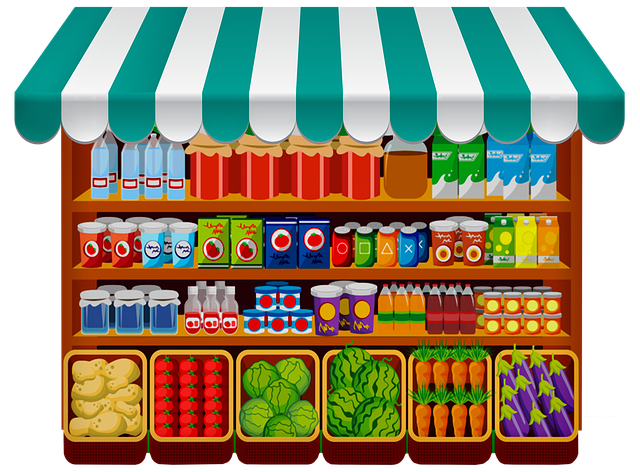Several states, federal and local government food assistance programs, give free groceries to low-income families. Also, numerous charities, churches, and nonprofits offer help to unprivileged people by distributing necessary resources.
Most of these programs are for helping society and ending hunger by meeting the nutritional needs of low-income households. They often also support the disabled, unemployed, elderly, children, and poor workers.
How can low-income families get free groceries from the government?
The Department of Agriculture is responsible for all the government food programs in the USA. The assistance provides free food, staples as well as groceries to needy households. They favor focusing on homes with children or the elderly. Assistance can also be provided directly to local nonprofit organizations that then provide food service to low-income people.
Here we have mentioned some of the most famous food assistance programs for low-income families –
Supplemental Nutrition Assistance Program (SNAP):
This is the main federal food assistance program across the United States. Millions of people currently avail of it; however, there are also many other households that can qualify for an EBT card but have never applied. This extremely helpful program was earlier known as Food Stamps but now has been renamed as SNAP.
Being the principal USDA hunger prevention program, SNAP has numerous conditions to qualify for the benefit.
Special Supplemental Nutrition Program for Women, Infants, and Children (WIC):
This is a federal government assistance program that gives nutritious foods and products to supplement the diets of low-income pregnant, postpartum, and breastfeeding women. Their program also includes newborns, children up to five years of age, and infants. Also, WIC provides nutrition education on living healthier.
The WIC program is regulated by the Department of Agriculture with the help of the state and local government health departments. For eligibility of any type of food aid, the organization considers the applicant’s total family income and overall nutritional risk as determined by a qualified healthcare professional or physician.
Nutrition Services Incentive Program (NSIP):
This food assistance program was called the Nutrition Program for the Elderly (or NPE). The motive of this program is to help older people and support their needs. The Health and Human Services manages it, with the help of state agencies for aging. It is also a part of the Grants for State and Community Programs on Aging, which also authorizes resources in the home, visits, and services for frail older people, support services, information, and other assistance for the operations of the senior center.
The program grants seniors Americans with nutritious groceries, free food, and meals. When possible, transportation assistance to and from neighborhood centers in your town is also provided for those who need it. Lastly, elderly people get home-delivered meals, also known as “wheeled meals.”
School Lunch and Breakfast Assistance Program:
School Lunch and Breakfast Assistance Program gives food and meals to children in schools, especially to those who cannot afford it. They usually offer these meals for free or at a reduced price. Even children with moderate-income families can get meals at reasonable prices. This implies that the benefit is not just for students who come from a household living in poverty.
Child and Adult Care Food Program:
This program for low-income families offers snacks, meals, and food for both children and infants. Normally, the distribution takes place in homes or family daycare centers and other health care locations across the country. Moreover, the program can help adults and seniors living in nursing homes or daycare centers.
Senior Farmers’ Market Nutrition Program:
It provides low-income seniors (people at least 60 years old) with grocery and food stamps during the harvest season. You can exchange the coupons for foods, fruits, vegetables, groceries, dairy products, and more at farmer’s markets. It can also be used for community-supported agricultural programs and roadside stands.
Feeding America Backpack:
Students are eligible to get free food, meals, snacks, and other food items from this national assistance program. All items are absolutely free for the student, regardless of their income. Additionally, food is provided discreetly and confidentially.
The students receive a backpack filled with groceries, healthy snacks, and other stuff so that they have some type of nutrition during the weekend or a holiday break. For availing of their service or getting more information, call 800.771.2303.
WhyHunger National Hunger Hotline:
If you are struggling for food, then you can get referrals for food pantries. Local charities and other organizations manage these food pantries. WhyHunger National Hunger Hotline provides the information to callers about SNAP food stamp application sites, free school lunch as well as other government programs. Its staff will also distribute details on all government-created resources.
The Emergency Food Assistance Program:
Each state gets surplus food from the federal government. The states then work with local food banks and pantries, churches, soup kitchens, charities, and nonprofits. These organizations help in distributing the items to those who need it, especially low-income families. The TEFAP assistance items are free, and you only need to call to make arrangements to pick it up. It focuses on feeding senior citizens, children, and physically disabled individuals.
Summer Food Service Program:
This is a service that offers free food, meals, snacks, and snacks for needy children during the months when school is not in sessions, such as summer or winter break. The United States Department of Agriculture (USDA) funds this program, but the churches, pantries, and nonprofit organizations administer it locally. The best part is that it is available in all states across the United States. Read more about the Summer Food Service Program.
The conclusion –
Groceries are one of the most important things in everyone’s life. But the sad part is that it is getting costlier each passing day. There are millions of people across the world who live below the poverty level and, hence, cannot afford any food items. Therefore, to make their life a bit easier, the government offers free groceries for low-income families through these assistance programs.




